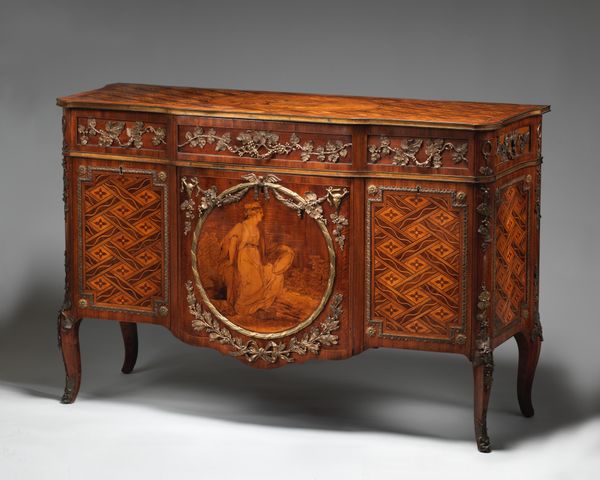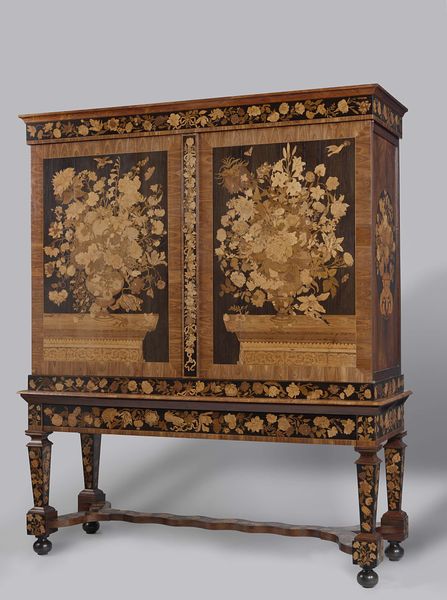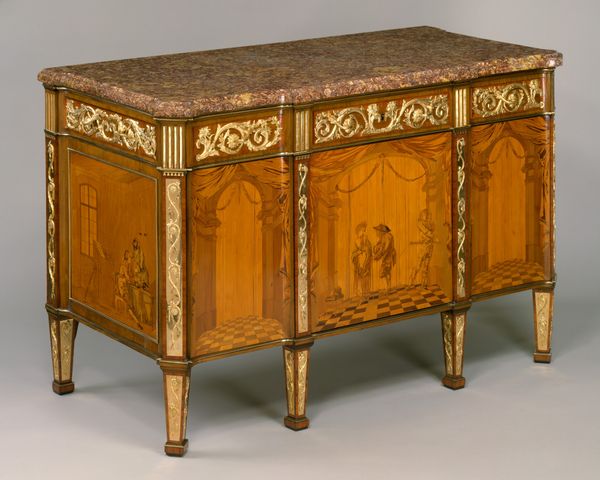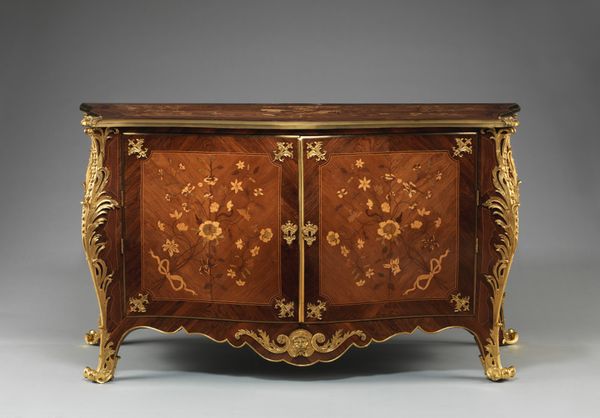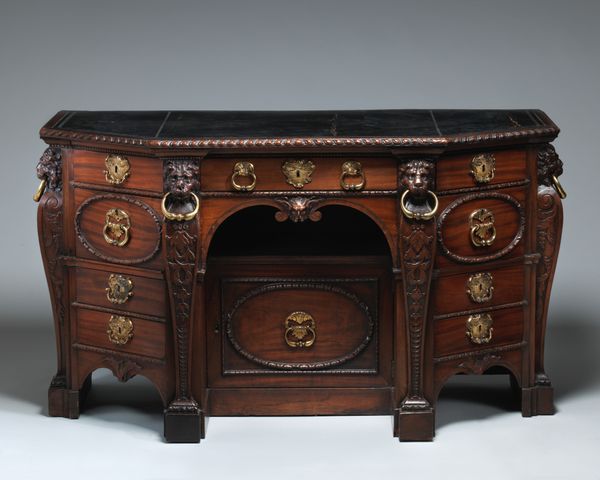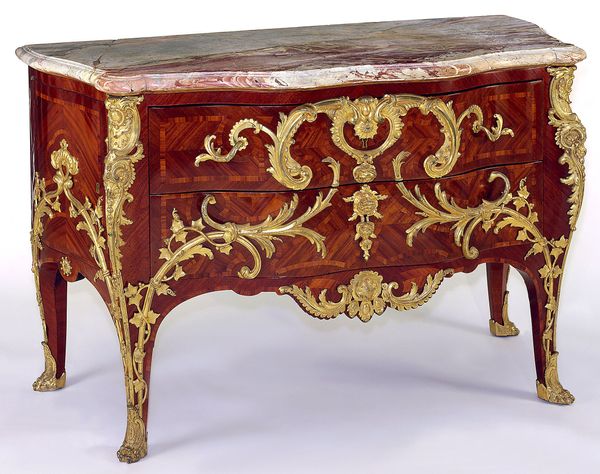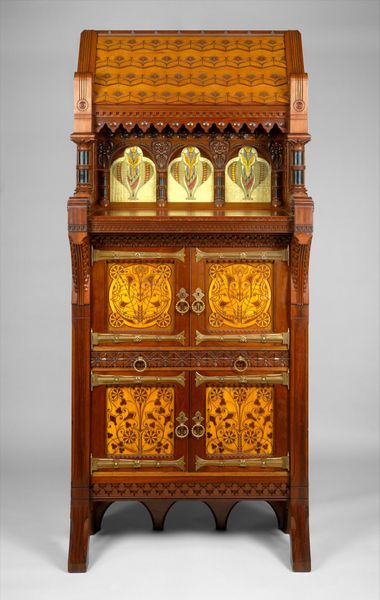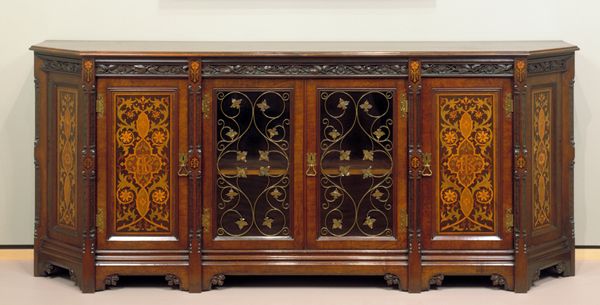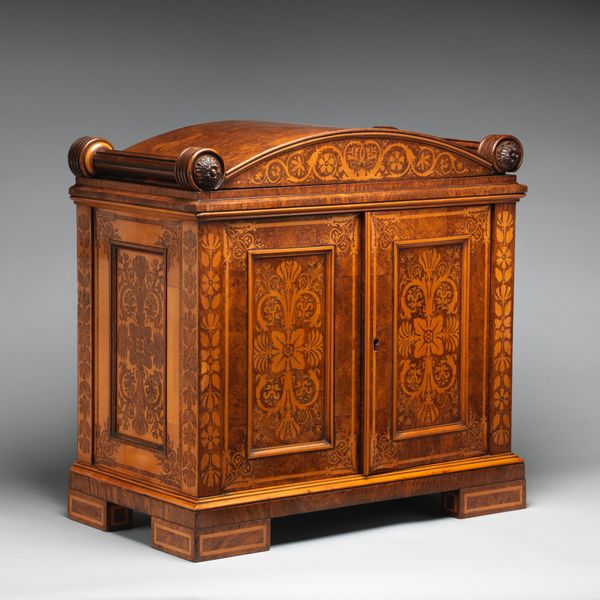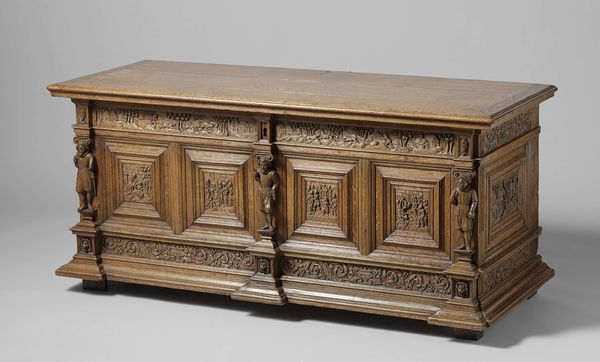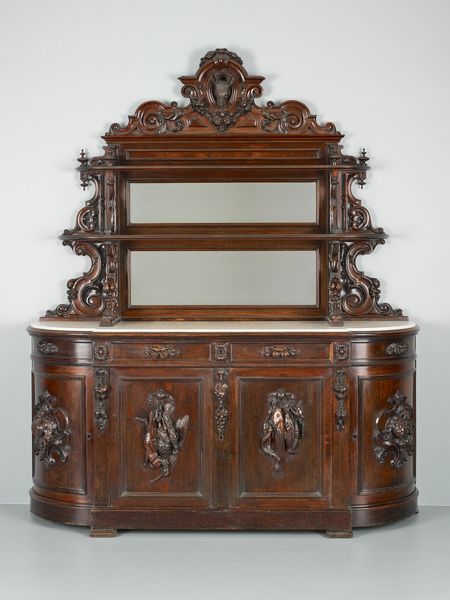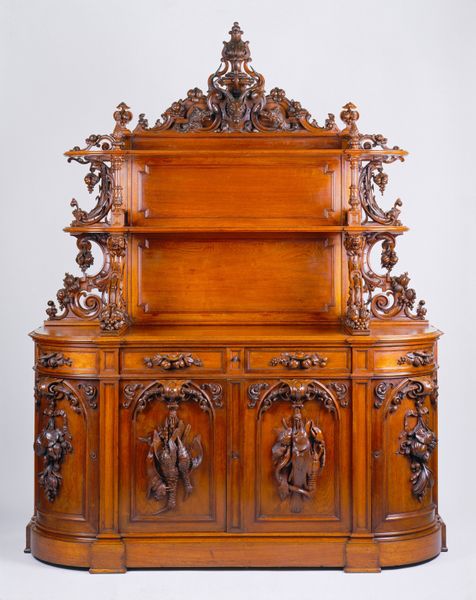
Dimensions: 134.6 × 180.3 × 40.6 cm (53 × 71 × 16 in.)
Copyright: Public Domain
Curator: This cabinet, crafted by the Herter Brothers between 1878 and 1880, is a magnificent example of the American Aesthetic Movement. You can find it here at the Art Institute of Chicago. Editor: My immediate impression is one of carefully balanced complexity. The dark wood creates a sense of formality, but the detailed floral marquetry brings a lightness, almost a sense of invitation. It seems designed to impress, but also to house things beautifully. Curator: Absolutely. Its aesthetic exemplifies a departure from Victorian stuffiness and towards a more considered design. Think about the historical moment: Post-Civil War America seeking a new visual vocabulary. The cabinet is a statement about wealth, certainly, but also about cultivated taste. Editor: The roses climbing across the cabinet doors certainly strike me. Roses are a symbol steeped in history – of love, of secrecy. The way they're stylized, almost abstracted, lends itself to interpretation beyond simple adornment. Then we have the small bird on the roundels on either side - another classic image. I’m compelled by the narratives embedded in those choices. Curator: And consider where the Herter Brothers were drawing their influences from. This piece combines Western design with elements inspired by Japanese art, which was hugely fashionable in America at the time. The asymmetrical placement of the decoration is typical of Japanese design principles and offers a deliberate break with conventional Victorian symmetry. It questions whose stories get to be told, and how. Editor: You can definitely see the intentional rejection of pure utility, too. Each flourish adds to the meaning of the piece. It’s a space for keeping treasured possessions, for creating displays… the beauty, in its construction and intention, invites reflection. Curator: Precisely. In many ways, it prefigures later developments in the Arts and Crafts movement, where art and design became intertwined with social ideals and a conscious effort to make art accessible to wider audiences through production. Editor: It’s clear this is more than just furniture. The cabinet's symbolic language – of wealth, yes, but also of cross-cultural pollination – feels particularly poignant now. Curator: Indeed, it serves as a reminder of the complex narratives woven into seemingly simple domestic objects. Editor: Looking closely has really emphasized how this object blends both historical trends and social statements within its beautiful ornamentation.
Comments
No comments
Be the first to comment and join the conversation on the ultimate creative platform.
